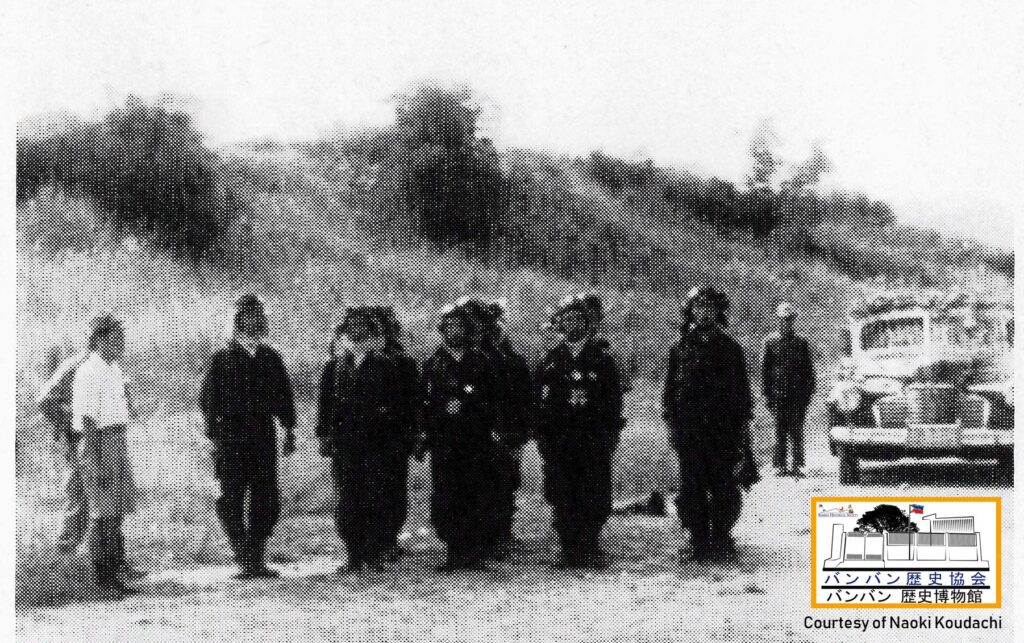
Visit of Bereaved Families from Japan
Seventy-five years ago, when the war ended in WWII, the effects of the war and the death of a member of family still linger on both sides; Filipino, Americans and Japanese. On my part, we lost our grandfather, 2nd Lieutenant Mauricio Cauguiran of the USAFFE guerrillas of Bamban. The same goes to some Americans and Japanese families whose grandfathers, fathers or uncles fought and died during the war. In Japanese culture, fireflies or “hotaru” represent another form of the souls of soldiers who have died in war. There are still Japanese bereaved families whose elders fought as soldiers, sailors or pilots and died during the battle, never to return to their home. In the 15 years of existence of Bamban Museum, I have encountered visitors who are bereaved families that come to pray for the repose of souls of their fallen elders. Last February 15, 2020, as the effects of the pandemic has not yet brought us to quarantine, I received a delegation of descendants of pilots of the Imperial Japanese Army and Navy; some of them were members of the Special Attack Force or what we know as Kamikaze pilots. I was not aware of my delegates as something uncommon but nevertheless, I understand that they, just like me, are descendants of WWII veterans too. After seeing the many exhibits of artifacts, images, personal collections of Filipino, Japanese, Aytas, and American soldiers in display, they prayed for their departed elders that some died in the Philippines, believing that they can feel “the spirits of the Japanese pilots” at the Bamban Museum.
HACHIRO AKASHI: A Japanese Naval Pilot Assigned at Clark Field, Circa 1944
Eiji Akashi is a businessman from Tokyo, engage in the importation and distribution of bananas including those from the Philippines. His trip to Bamban Museum is a sentimental journey for him, he representing his family in remembrance for his uncle who was not only a Japanese naval pilot, but also a member of the Kamikaze special attack force (Tokko) and died during his last Tokko-tai mission. My travel agency contact person did not inform me of the nature of the Japanese delegation but as soon as the visitors disembark from the bus, I noticed that each has a nameplate indicating the name of important purpose. It was there that I came to know that the delegation members were actually descendants of Japanese pilots who served in the Philippines during WWII, and that most of them died in combat. I immediately noticed one descendant, holding a small portrait of a young Japanese naval pilot. My interest kicked in and I immediately shown my interest for my Japanese Study of WWII.
In spite of the busy atmosphere at the Bamban Museum at the time, I managed to get interviews and information from Eiji-san revealed that his uncle, Hachiro Akashi, was a pilot of a Yokosuka D4Y Suisei (Allied code name Judy); a carrier-based naval bomber belonging to 105 Attack Squadron (105 Kogeki Hikotai) and was assigned at Clark Field with the famous Air Group 201 of the Kamikaze special attack corps. The Suisei carrier-bomber, was also used for air reconnaissance by the Japanese Navy and expended in the many numerous suicide attack sorties in the Philippines in the latter part of 1944. As part of my WWII History of the Clark-Bamban area is the Japanese Study (and so goes in the concept of my museum exhibit), I became interested to get the story of Hachiro Akashi through his nephew, Eiji. Further communication with Eiji made me compile some records of his uncle Hachiro including military service.From Davao to Mabalacat Airfield
Hachiro was born in 1923 in Ibaraki Prefecture, Japan. As his teen years was rocked by the war years, he enrolled at the Naval Aviator Preparatory Course Trainee at Tsuchiura Navy Air Crops, Tsuchiura City which is usually known in the Japanese aviation history as Yokaren. Other sources indicated as Ko, Otsu Flight Reserve Enlistment Trainee – Yoka Renshu-sei. Students at Yokaren course were young, usually between the age 15-17. Hachiro, much like of his fellow students, was able to pass the strict and stringent test, both physical and mental, at the Tsuchiura Yokaren and graduated in the new course Type-A Ko-Shu belonging in the 9th Group. After graduating at the Tsuchiura Yokaren, he was posted at the 501 Kokutai (Air Group 501) in January 1944 and stationed at Mobara Airfield, Mobara City, Chiba Prefecture. Later, his overseas assignment begun when he was posted as a pilot for Yokosuka D4Y Suisei (Allied code name Judy) which was a two-seat carrier-based dive bomber (Kanjō Bakugekiki) and attached to Attack 105 Attack Squadron (Kougeki 105 Hikotai), Air Group 501 and was mobilized at Davao Airfield, Davao in Mindanao. After the debacle in the Battle of the Philippine Sea (Operation A-Go) in June 1944 with the loss of the many aircraft of the Imperial Japanese Navy’s air forces, the 1st Air Fleet retreated to the Philippines which affected Hachiro’s unit with the Air Group 501 based in Davao. The Suisei dive bombers from the 105 Attack Squadron, Air Group 501 was reorganized and absorbed by the larger air unit; Air Group 201 (201 Kaigun Kokutai), 1st Air Fleet in July 1944, which then became the primary naval air force for the defense of the Philippines. With the start of the American air campaign south of the Philippines in early September 1944 including the Mindanao Islands and the Japanese air bases in Davao, the fighter and attack squadrons of the Air Group 201 (Including Attack 105 Squadron) were dispersed to the airfields at Cebu, Nichols, and Mabalacat including Hachiro’s Kougeki. By September 21, 1944, the first American naval air strikes were conducted in Luzon, bombarding Japanese assets and airfields in Manila and Central Luzon.
With the arrival of the main American naval forces as sighted off Suluan Island, it was inevitable that the Japanese High Command in Tokyo ordered the execution of the Shogo (Leyte, Victory) Operation No. 1 on October 18, 1944 intended for the defense of the Philippines from American attacks. Japanese air assets will be mobilized for Philippine Operation including the 2nd Air Fleet from Formosa in the following days.
With the Kikusui-Tai of the First Special Attack Corps at Mabalacat
Hachiro Akashi, being a pilot of Yokosuka 4DY Suisei “Judy” carrier bomber, was with his original unit with the Attack 105 Hikotai (105 Attack Squadron) under the command of Captain Koji Yaita and attached to Air Group 201 based at Mabalacat East Airfield. However, Hachiro’s Attack 105 Hikotai, at times, was also attached to other unit based at Clark Field; the Air Group 761. This attachment with the 761st has credibility, since the reorganization of the First Air Fleet earlier, all naval bombers were grouped with the said unit, much like the fighters with the 201st and the night fighters/reconnaissance aircraft with the Air Group 153. Hachiro’s transfer to Mabalacat Airfield was a critical point in the history of the Imperial Japanese Navy, and in aviation history. As the Shogo Operation was already in place, there was a changed in the organization of the navy air forces in the Philippines. Vice-Admiral Kimpei Teraoka was replaced by Vice-Admiral Ohnishi Takijiro to command the 1st Air Fleet, who was considered to be the Father of Kamikaze. On the evening of October 19, 1944, Vice-Admiral Ohnishi was in Mabalacat, on the house of the Santos Family (which is now the KFC restaurant) which was then the headquarters of the Air Group 201 and presented the strategy of the crash-dive special attack. Before midnight, the organization of the Shimpu Special Attack Corps (Shimpu Tokubetsu Kogekitai) was made by Commander Asaichi Tamai, executive officer of the Air Group 201 with 23 pilots (24, including Lieutenant Seki) with four sections or groups named Shikishima, Yamato, Asahi, and Yamazakura. Lieutenant Seki was appointed commander of the First Kamikaze Special Attack Group.
According to Eiji Akashi, his uncle Hachiro was one of the first volunteer pilots of the First Kamikaze Corps that was organized in October 1944. However, based on the record gathered by the family of Hachiro (and provided to the author), he was posted with the Kikusui-Tai (Kikusui-Suisei unit). Further research revealed that of the 24 original volunteers of the first special attack force, those who were not posted on Shikishima, Yamato, Asahi and Yamazakura sections were admitted to the Kikusui unit, hence, Hachiro’s Kikusui-tai was organized on the following day (October 20, 1944) as the spirit of special attack spread to other units at Mabalacat, Clark and Cebu.
Death of the Kamikaze Pilot
Days after the founding of the first special attack corps at Mabalacat, the Kamikaze soon spread and adopted by other units of the First Air Fleet. From October 20, 1944, sorties from Shikishima, Yamato, Asahi and Yamazakura as well as from other units from Mabalacat airfields and the forward bases at Cebu were carried but to no avail, except on the flight of the Shikishima unit led by Lieutenant Seki from Mabalacat East Airfield on the morning of October 25, 1944. Information revealed by the Hachiro family indicated that Akashi took-off with his Yokosuka D4Y Suisei from the air strip of the Mabalacat East Airfield on a suicide mission. However, instead of heading to the American surface ships at Leyte area, Hachiro landed at Davao Airfield to the south in Mindanao. The airfield at Davao was also an important staging base of conventional and special attack forces of the First Air Fleet units.
On the following day (October 26, 1944), the two-seater Suisei piloted by Hachiro took-off from Davao Airfield to search for American surface ships on a special attack mission of the Kikusui-Tai. Accordingly, Hachiro and navigator-gunner did not return and presumed dead in the aftermath of the Kamikaze mission. Most of the Kamikaze pilots of the Kikusui-Suisei unit were lost in the special attack sorties during the general attack on American surface ships in Leyte Gulf area. Only Mitodo-Ki, who was flying for escort and observer mission for the Kikusui-tai managed to escape death and was able to survived the general offensive of the special attack on the October 25-26.
A careful analysis and validation of the information related to Hachiro Akashi’s Kamikaze special attack using the primary source Divine Wind, Japan’s Kamikaze Force in WWII “Appendix A: Kamikaze Attack Operations In the Philippine Islands Area”, (as authored by the very officers who were part of the special attack organization) revealed that of the sorties took-off from Davao Airfield with 3 Kamikaze airplanes with 2 escort/observers on American carriers and battleships near Surigao Straight, carried on October 25, 1944 which resulted in damaging one American aircraft carrier. It might be possible that Hachiro’s last Kamikaze mission with the Kikusui-Tai was on this date (the 25th) and sortie and had died during the attack in Surigao Straight, as there were no other special attack sorties from Davao Airfield on October 26, 1944 or on the following days.
VI. Praying for World Peace
In the course of my interview with Eiji Akashi (Hachiro’s nephew), he showed me a photo of a young Japanese pilot in navy flight suit, handsome and full of life. That life was expended in an unorthodox method of warfare that was uncommon to the Western perception of war. As I keep on listening to Eiji’s stories about his uncle, I can only evoke the Firefly in Japanese belief; that is the spirit of the fallen soldier (in this case, a pilot) that might be roaming in the premises of my museum at the time. Before leaving, Eiji and his fellow descendants of Japanese pilots prayed for the “repose of souls” of all those who died in battle and for peace in this world. He handed me the portrait of Hachiro which I took for a close-up shot with my Iphone 11 for my Museum collection. He bade goodbye, but left a friendship between two descendants of WWII soldiers.
Captain Inoguchi’s Thoughts
The memories of war, its effects and sufferings to the bereaved families will always be there. Japanese visitors, especially descendants of fallen soldiers who died in the battlefields pray for peace, that war should never happen again like what happened in WWII. As I am doing my research for this article, I chanced upon these words from the former Japanese naval officer; allow me to share the following extract from the book Divine Wind:
“They (special attack pilots) fought for an ideal. Their road toward that ideal was Bushido, but their goal was the world peace enunciated by Ohnishi in his last statement.”
Captain Rikihei Inoguchi
Former Senior Staff, 1st Air Fleet
Special Attack Officer,
Combined Land-Base Air Force
*************
Rhonie Dela Cruz
Bamban Historical Society
Bamban WWII History – Center for Japanese Pacific War Studies
Main References
(1) Military Information re Hachiro Akashi, as provided by Eiji Akashi. Bamban Historical Society Collection, Bamban Museum, Bamban, Tarlac.
(2) Inoguchi, Nakajima and Pineau, The Divine Wind – Japan’s Kamikaze Force in WWII (Maryland, United States Naval Institute, 1958).
(3) Ikuhiko Hata and Yasuho Izawa, Japanese Naval Aces and Fighter Units in WWII, trans. Don Cyril Gorham (Maryland, United States Naval Institute, 1989).
(4) Kaneko Toshio, True Records of the Kamikazes (Tokyo, Kojinsha, 2001).
Photos:
(a) Photo of Eiji Akashi, holding a portrait of his uncle Hachiro Akashi; taken on February 17, 2020 at Bamban Museum.
Bamban Historical Society Photo.
(b) Portrait of Hachiro Akashi as a young naval pilot.
Courtesy of Eiji Akashi, Bamban Historical Society Collection.
(c) Descendants of Japanese pilots at Bamban Museum, February 17, 2020.
Bamban Historical Society Photo.
(d) Yokosuka D4Y Suisei “Judy”, a Japanese navy carrier-bomber used extensively for Kamikaze special attack missions in the Philippines.
Image from https://en.wikipedia.org/wiki/Yokosuka_D4Y.
(e) Aerial recon photograph of Mabalacat East Airfield, November 5, 1944.
US National Archives NARA Photo.
(f) Japanese navy Kamikaze special attack pilots in formation near Mabalacat West Airfield, October 21, 1944. Naoki Koudachi photo. Bamban Historical Society Collection.
(g-h) With Eiji Akashi at Bamban Museum.
Bamban Historical Society Photo.


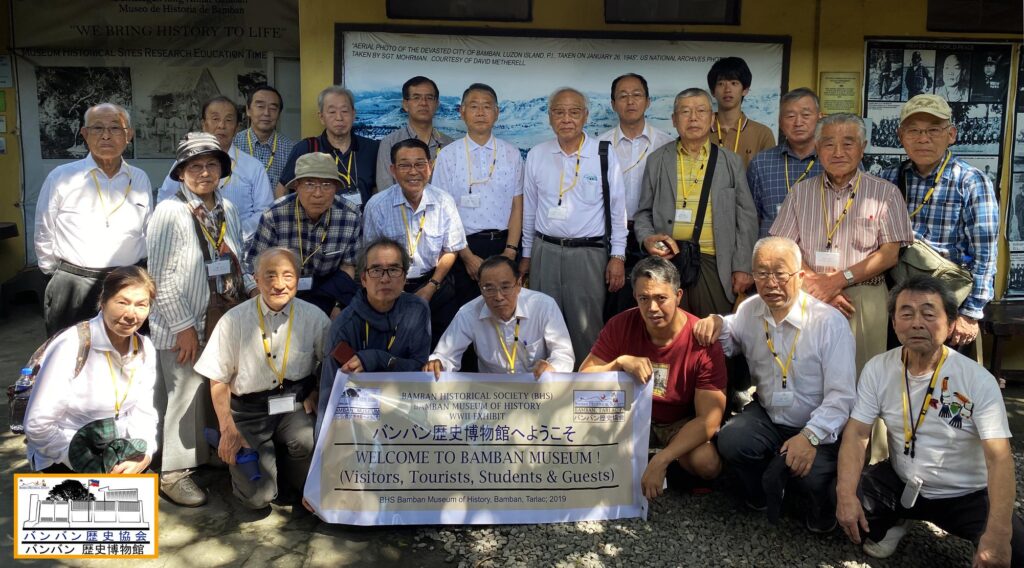

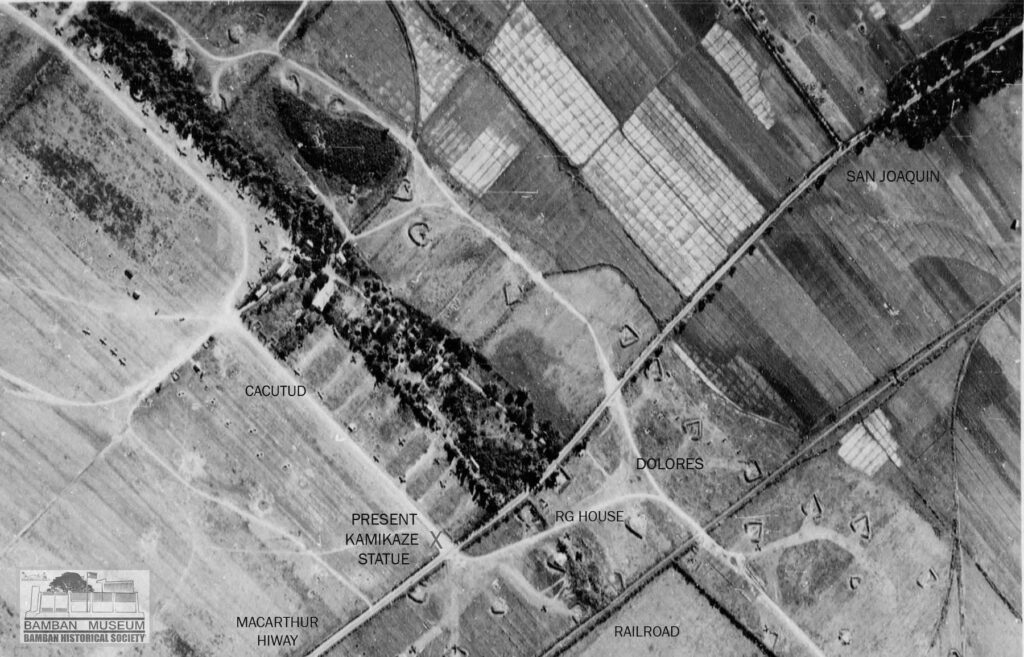




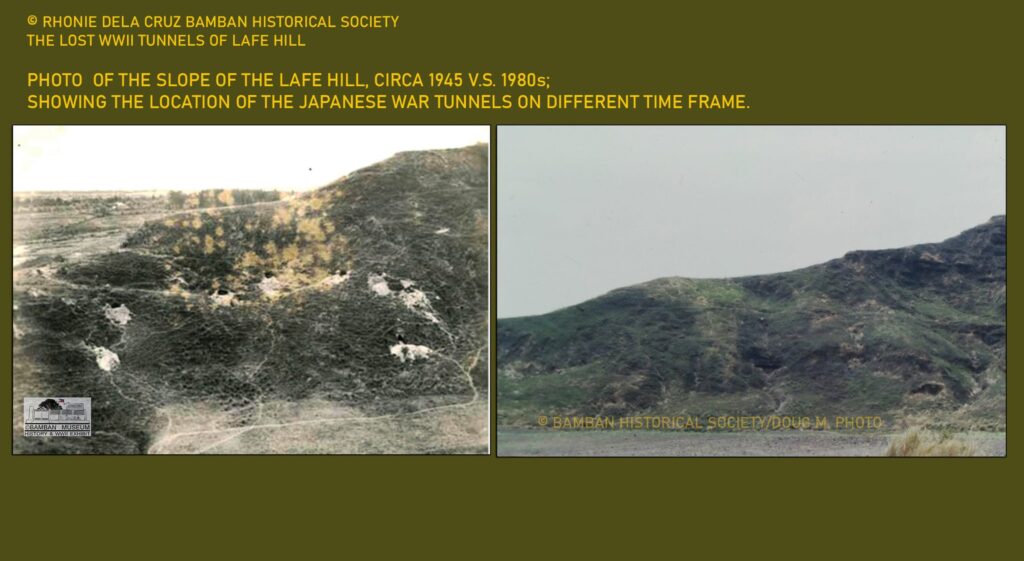
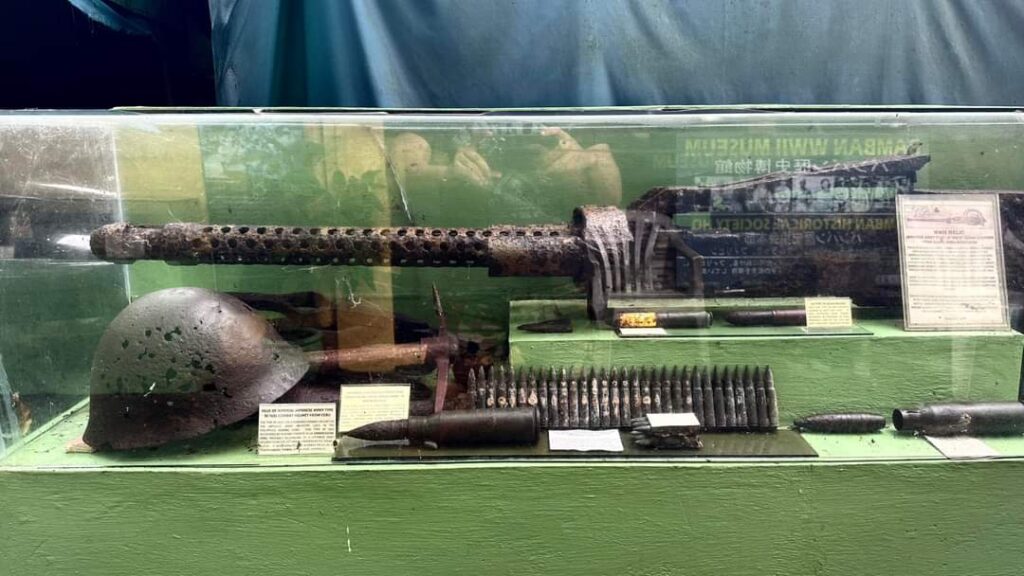

Hello there, just became aware of your blog through Google, and found that it’s truly informative.
I am gonna watch out for brussels. I’ll appreciate if you continue this in future.
A lot of people will be benefited from your writing.
Cheers! Escape roomy lista
Thank you so much for the appreciation. This inspire us to work more.